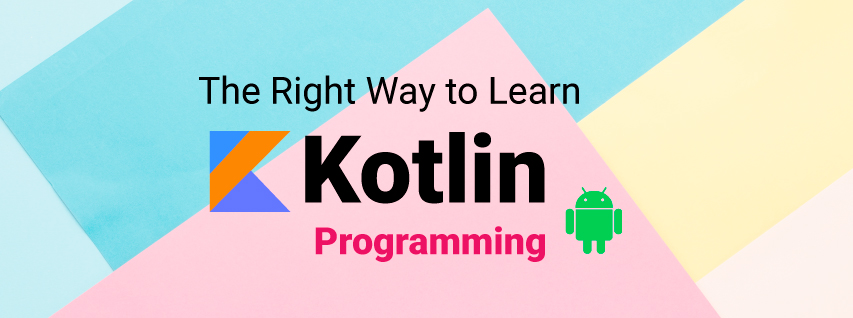- August 21, 2020
- nschool
- 0

The Right Way To Learn Kotlin Programming From Scratch
Kotlin is rapidly joining the positions of the most well-known programming languages. Since Google supports Kotlin for Android application development as the essential decision over Java, we’ll just observe more developers doing the switch. The job market for Kotlin developers has skyrocketed no matter how you look at it. Notwithstanding mobile development, Learn Kotlin Programming it is very well used for virtually anything, including web applications and embedded gadgets.
In this post, we’ll look at the following:
-What is Kotlin? -What is Kotlin utilized for? -Why you should learn Kotlin -Why developers favor Kotlin for Android development -Java versus Kotlin -Introduction to Kotlin language and syntaxBefore the finish of this post, you’ll have a comprehension of the benefits of Kotlin, and you’ll be prepared to write your own scripts and applications.
Here’s the way you can begin with programming in Kotlin. Let’s begin..
What is Kotlin?
Kotlin is an open-source, statically composed programming language. It can transpile to Java bytecode to run on the Java Virtual Machine or Android. Curiously, it can likewise transpile to JavaScript code or local bytecode, permitting you to utilize it for some, unique use cases.
Kotlin is created by JetBrains, and other development tools. They planned Kotlin to be 100% interoperable with Java, implying that you can utilize any Java libraries and frameworks in Kotlin, and vice-versa.
What is Kotlin utilized for?
Presently, it’s most prominent for Android application development. However, its usage for creating server-side applications for the Java Virtual Machine is expanding.
Also, it tends to be utilized to compose web applications by transpiling to JavaScript. Kotlin then lets you utilize popular libraries and frameworks, for example, React and VueJS.
It’s helpful to think about the corresponding sub-extends on the off chance that you encounter them:
Kotlin/JVM:
Lets you write JVM applications by transpiling to Java bytecode, for example Android development, Spring services)Kotlin/JS:
Lets you write web applications by transpiling to JavaScript, for example React applications.Kotlin/Native:
Lets you compose applications for any target platform, for example, installed devices or iOS, for example iOS applications, microcontroller programming)As a side note, Kotlin supports multi-platform application development, which empowers you to share code between applications for various platforms. The clearest use case is to share core functionality between your Kotlin Android application and your Kotlin iOS application.
For what reason would it be a good idea for me to learn Kotlin?
Learning Kotlin from scratch can teach you a great deal about language design and a portion of the shortcomings of Java that you might not have known about previously. Therefore, it may very well be an incredible way to learn about modern programming languages that you will experience in other languages as well, for example, TypeScript, Scala, Go or Rust.
Aside from this, there are numerous organizations effectively searching for Kotlin developers, particularly in the Android development space. So having involvement with Kotlin can give you an edge in the interview procedure.
But even without the objective of finding a Kotlin developer job, learning the language and its ideas will allow you to rapidly master other modern languages, for example, TypeScript, Scala, and Swift since they share numerous language concepts.
Why developers choose Kotlin for Android development
In 2019, Google declared that the Kotlin programming language is presently its favored language for Android application development, rather than Java. For a lot of developers, this is a much-needed refresher. Java, for every one of its qualities, has a lot of spoilers too. In this way, here are a couple of reasons why designers are switching to Kotlin.
1.100% interoperability with Java
Kotlin and Java are 100% interoperable, which means you can have any level of code written in Kotlin, and the rest in Java, and it will all work together. So you don’t need to stress over how it will influence your legacy code.
Moreover, there is a tool in Android Studio that permits you to immediately translate Java into Kotlin.
2.Extraordinary IDE and Tooling support
Kotlin has incredible support since it’s sponsored by JetBrains, an organization that represents considerable authority in making probably the most utilized IDEs in the world. With a strong network behind the language and tools, you’ll generally have support when you need it.
All of Android Studio’s IDE highlights work perfectly in Kotlin. You can blend and match Kotlin and Java code in a similar project, and everything works.
Java versus Kotlin
Size, complexity, and nature of code While utilizing Java, developers ordinarily need to write more lines of code, while Kotlin empowers developers to achieve similar tasks without writing so much code, making it more expressive. Further, it encourages developers to make code more sorted out, readable, and reusable. Along these lines, a few developers settle on Kotlin to build a concise, meaningful, and viable code base. To help deal with the quality of your code, Kotlin utilizes type inferencing, eliminating much of the disappointing and excessively tedious syntax that Java developers face. Regularly, code written in Kotlin is briefer, yet it likewise happens to be somewhat more complex for those used to programming in Java.
1.Invalid Safe
In Java, NullPointerException causes a great deal of disappointment for developers, they can even be the principal reason behind why you would encounter crashes in your application. However, in Kotlin, a wide range of factors are non-nullable as a matter of course. So if you try to attempt or return invalid values, Kotlin will get NPEs at compile time.
2.Type inference
In Java you have to indicate a kind of each variable when you announce it. In Kotlin, you don’t have to indicate the kind of every factor.
3.Functional programming
Java has support for functional programming yet it’s just available in Java 8, while most Android development is finished with Java 6 and 7. Kotlin is a mix of functional and procedural programming that comprises numerous helpful techniques, for example, lambdas, higher-request functions, lazy evaluation, and so forth. A large portion of these techniques are not offered for Android developers in Java 8.
Introduction to Kotlin language and syntax
Kotlin means to be a readable, pragmatic, safe, and interoperable programming language
1.Readability
is supported by language highlights, for example, type inference, data classes, and infix capacities. Such highlights permit writing compact code without losing meaningfulness.2.Pragmatism
is vital on the grounds that Kotlin is for enormous software development. JetBrains use it themselves to build up their IDEs. Therefore, Kotlin joins industry criticism and addresses issues of huge scope software development.3.Safety
intends to prevent regular programming bugs by structure. This is supported by a few language highlights, for example, nullable types and by bumping you towards best practices, for example, designing for inheritance.4.Interoperability with Java
is a significant selling purpose of Kotlin and an important base for its broad appropriation in the JVM world. Interoperability permits Kotlin and Java to be utilized one next to the other, including the utilization of Java libraries or systems from Kotlin. For example, the Kotlin standard library interoperates with Java by reusing the Java Collections API. So also, it interoperates with JavaScript with regards to Kotlin/JS.Now that you have a basic understanding of the philosophy of the language, N-school offers an exciting new way of learning key skills in kotlin through our specialized course. Learn from some of the best application developers and imbibe industry practice and strategies to build a successful career in Android.

